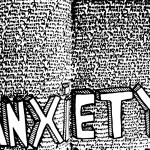
Most of us are on-the-go from the start of the day, tackling to-do lists and facing one distraction after another. By the time we are ready to end our day, laying down and just relaxing is easier said than done. If you have trouble sleeping, here are 4 techniques that can help you calm down, prepare for sleep and put your hectic day behind you.
4 Techniques for a Restful Night
1. Abdominal Breathing from Health.com
Breathing from the abdomen and putting your attention on those breaths can help you relax both during the day and in bed [if you have trouble sleeping] at night. Some people may enjoy lying in a dimly lit room, closing their eyes, or listening to soft music while focusing on their out breaths.
While sitting or lying in bed, try placing your hands on your belly. “When you breathe in and breathe out, your hands may gently move,” says Kathy Doner, MD, who has a full-time hypnotherapy practice in Sebastian, Fla. “Focusing on this movement gets your mind off of your busy thoughts and onto your body. [If you have trouble sleeping] you can distract yourself and bring yourself to a different place. It’s very calming.”
2. Progressive Muscle Relaxation from GaiamLife
According to the Arthritis Foundation, progressive muscle relaxation is a simple technique that has great calming benefits. With progressive muscle relaxation, you progressively tense and relax the various muscles in your body, either starting at your feet and moving upward, or starting at the top of your head and moving downward. You tense each muscle group for five or 10 seconds and then release the tension. Sit or lie in a comfortable position and focus on your breathing while performing this calming meditation.
3. Listen to Binaural Beats from BinauralBeats.org:
Binaural Beats can help you to achieve complete relaxation, allowing you to fall into deep sleep as quickly as possible. A binaural beat is effectively a broadcast of two separate frequencies, one going into each ear. Your brain will then tune to the frequency that represents the difference between the two. For example, by broadcasting 170 Hz into your right ear, and 180 Hz into your left ear, the brain would tune to a frequency of 10 Hz. As your brain balances the different frequencies, you will have less trouble sleeping as you find yourself able to relax more fully.
4. Guided Imagery from HuffingtonPost:
Some people imagine a calm scene to help them wind down at the end of the day. There are no rules about what you should imagine, so long as it’s calming. Although clouds, the ocean and mountains are common choices, you can focus on something as general or as specific as you want.
Pick a place that feels safe, and, using your imagination, invite any or all of your senses to explore it. “The brain doesn’t always know the difference between pretend and real,” says Dr. Doner. “If you watch a scary movie, your adrenaline might go up, just as if you imagine eating something vividly enough, you might start to salivate.”
If you have trouble sleeping find a technique that works best for you and practice it. Or try a combination of a few of them, right before bed when you want to become calm and quiet. And remember, if you also meditate during the day to keep your stress and anxiety under control, you’ll have less trouble sleeping at night.
Updated January 31, 2014.


